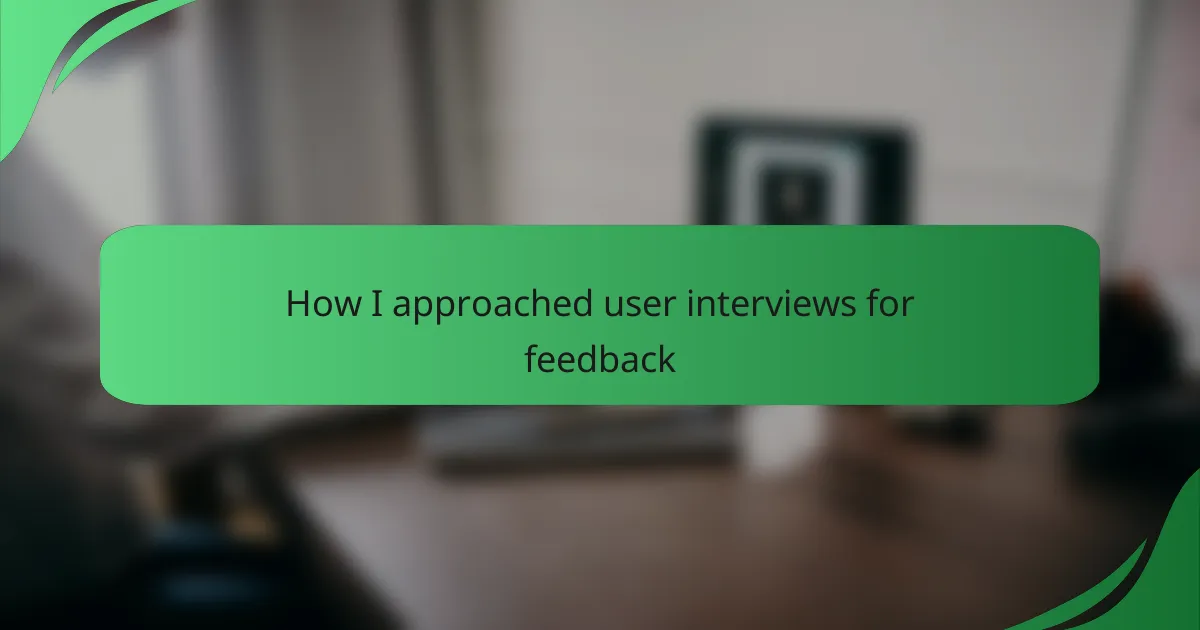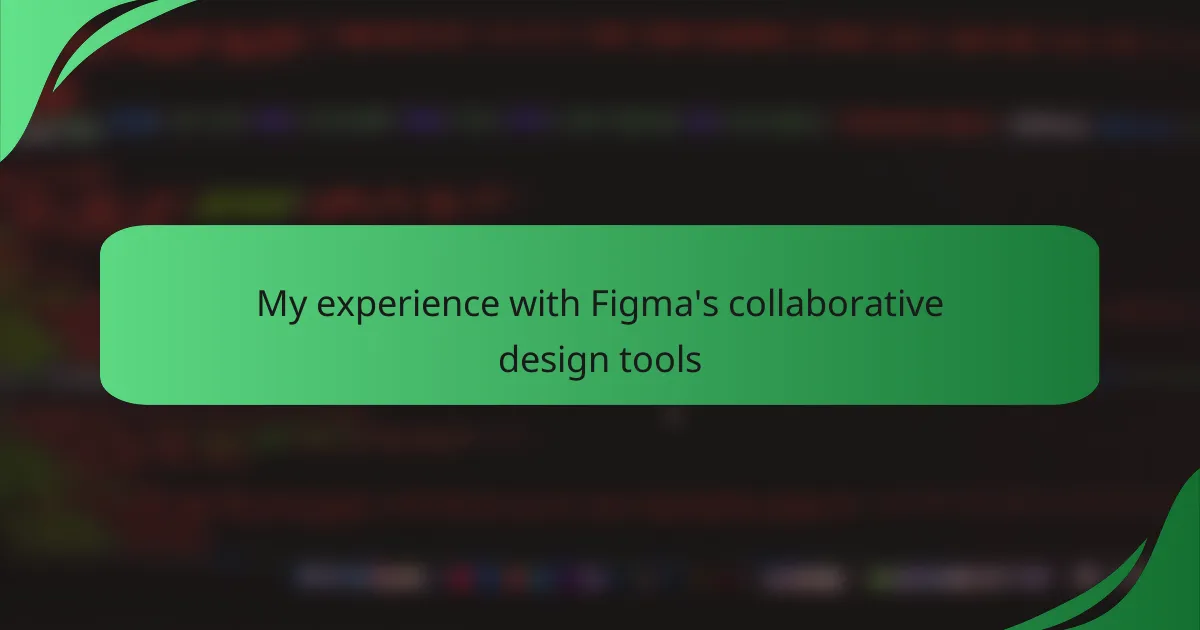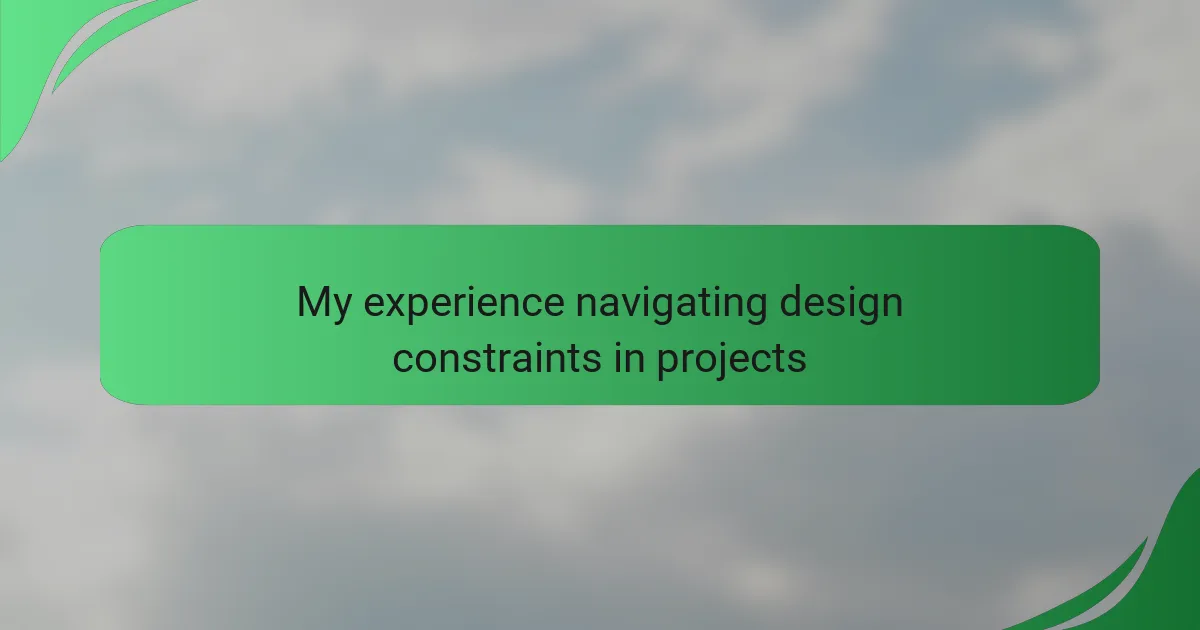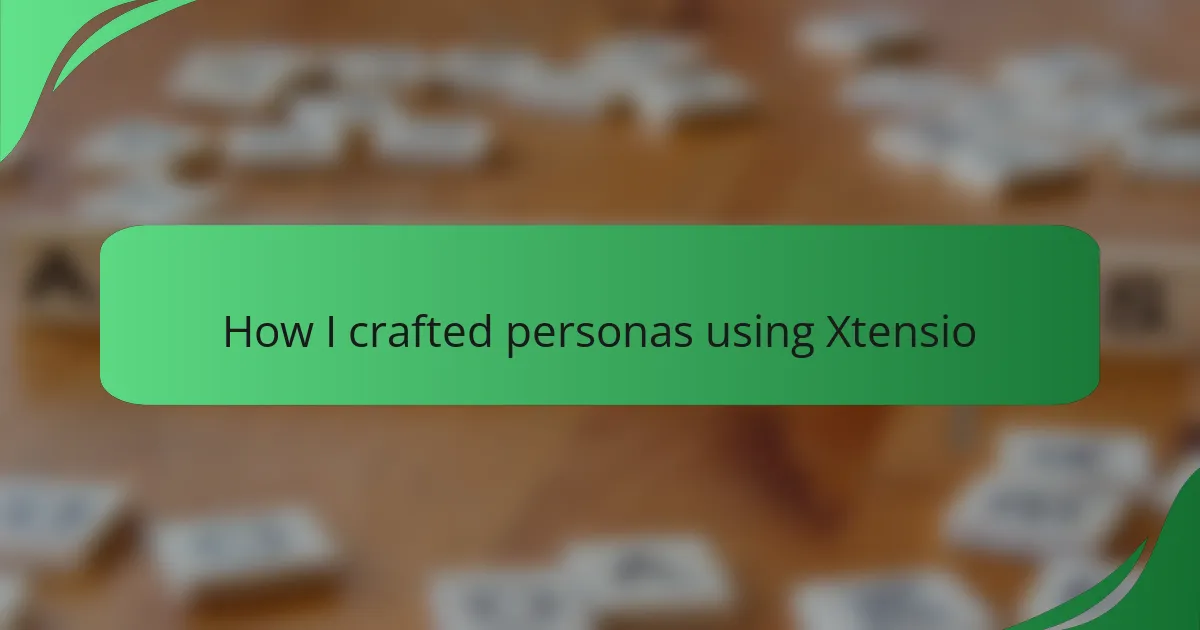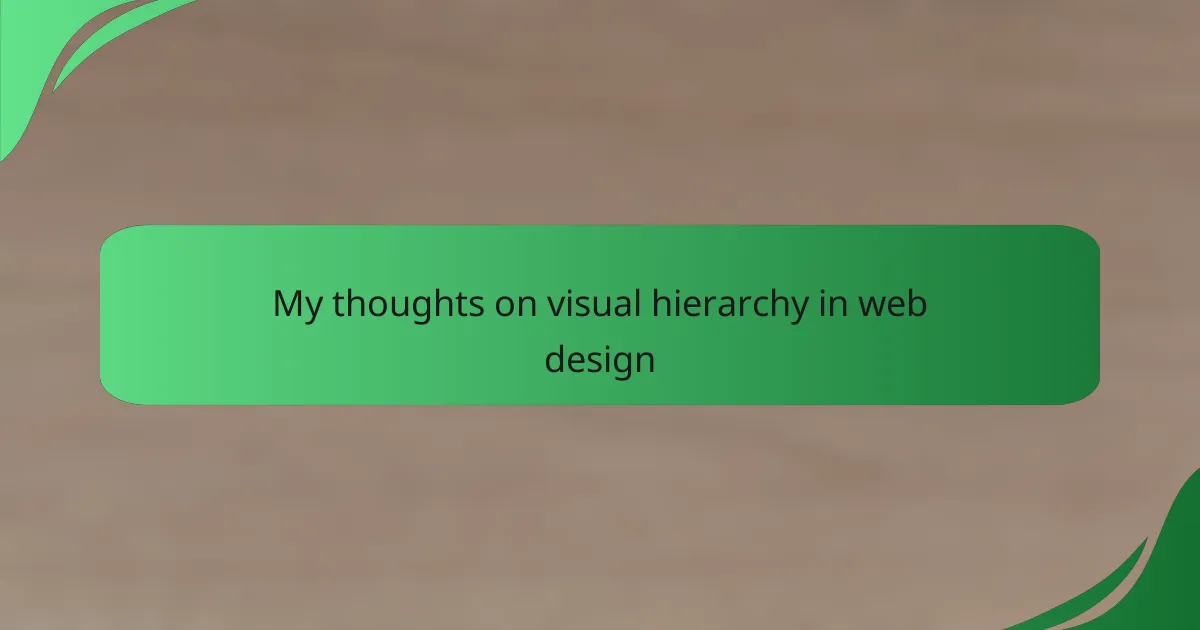Key takeaways
- User interviews are vital for gaining direct insights into user needs and challenges, often revealing unexpected valuable feedback.
- Effective questioning techniques, including open-ended and adaptive questions, foster deeper connections and uncover richer user experiences.
- Selecting diverse and representative interview participants enhances the quality of insights and ensures a comprehensive understanding of user interactions.
- Active listening and creating a relaxed atmosphere during interviews promote honest feedback and can unveil subtle nuances in user sentiments.
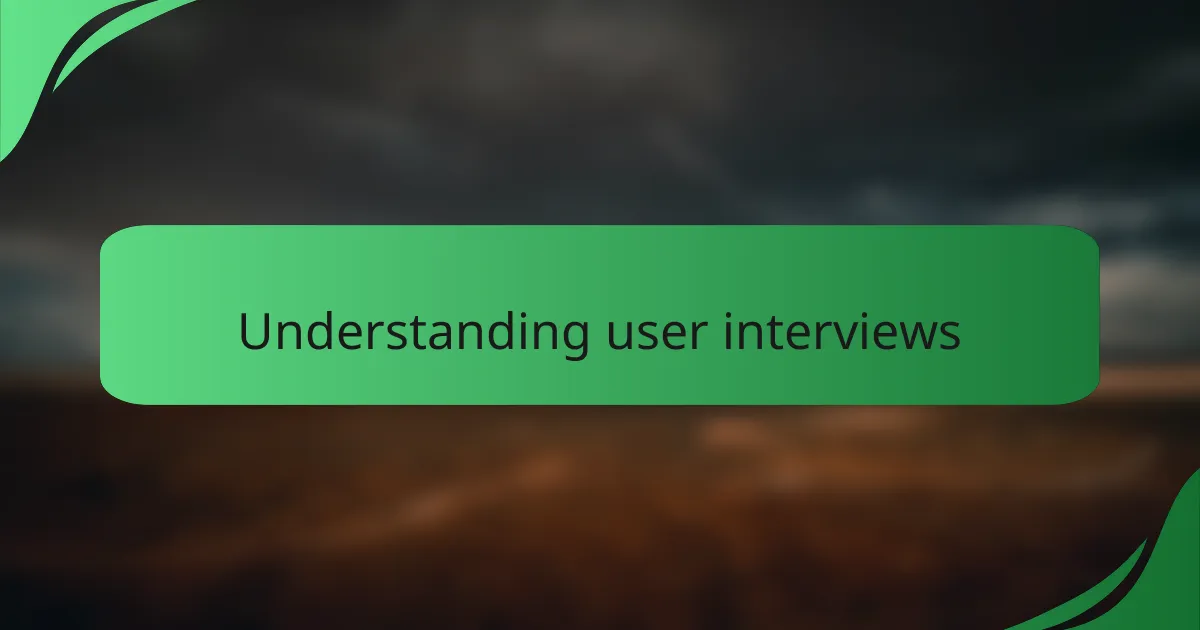
Understanding user interviews
User interviews are a critical tool in the design process, allowing me to gain insights directly from those who use my designs. Through these conversations, I often uncover needs and challenges that I wouldn’t have identified otherwise. I remember one interview where a user revealed how a small design change could significantly enhance their daily workflow; that moment was a game-changer for my approach.
I’ve found that effective user interviews rely heavily on open-ended questions. Here’s a concise list of key aspects to consider:
- Build rapport to make users feel comfortable sharing their genuine thoughts.
- Prepare questions ahead, but be flexible to follow interesting tangents.
- Listen actively; sometimes the most valuable feedback comes from what’s unsaid.
- Record interviews (with permission) to capture nuances in user reactions.
- Analyze findings collaboratively to ensure diverse perspectives inform the design decisions.
These elements have greatly enhanced my understanding of user needs and improved my designs.
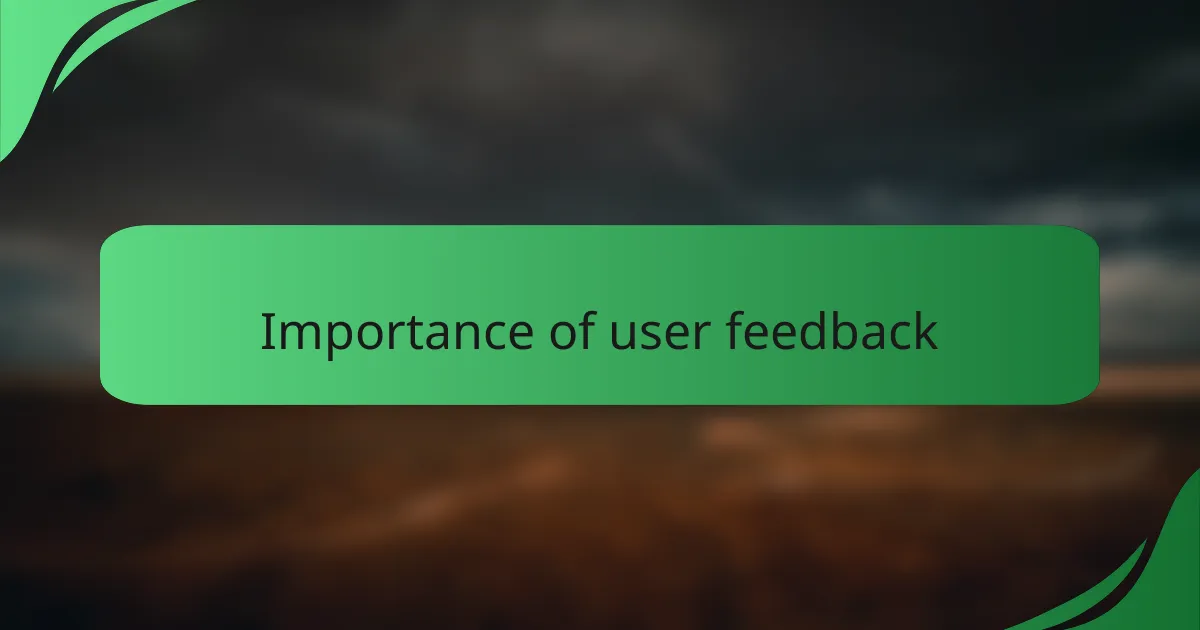
Importance of user feedback
User feedback holds immense importance in interface interaction design. I’ve personally experienced how pivotal it is to gather insights directly from users. For example, while conducting my interviews for a recent project, the users revealed some unexpected pain points that I had overlooked. Their honest feedback transformed my approach and ultimately led to a more intuitive design.
When users share their thoughts, it opens a door to a deeper understanding of their needs and how they interact with your interface. I once received feedback that a search feature was confusing, and that small insight prompted a complete redesign that made the user journey smoother.
- Validates design choices and reveals areas for improvement
- Encourages user-centered design, fostering loyalty
- Uncovers hidden user needs and preferences
- Strengthens communication between designers and users
- Inspires innovation by introducing new ideas and perspectives
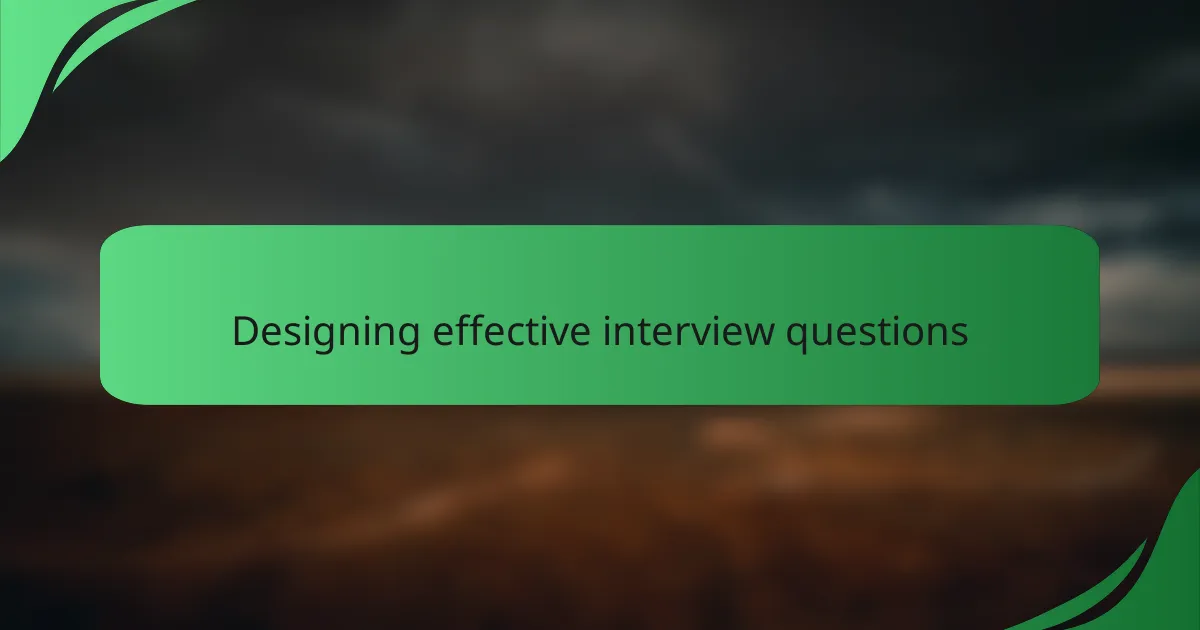
Designing effective interview questions
Crafting effective interview questions begins with an understanding of the user’s experience. I often ask questions that encourage users to share stories, such as, “Can you describe a time when you felt frustrated with a feature?” This approach not only elicits richer responses but also helps me connect emotionally with their experiences. By framing questions in this way, I have discovered nuances in user behavior that wouldn’t surface with standard questions.
I’ve learned to prioritize clarity and relevance when designing my interview questions. For instance, I ask straightforward questions that directly relate to the user’s interaction with the interface. Sometimes, I find that a well-placed “why” can lead to deeper insights. This back-and-forth exploration can uncover layers of issues users wouldn’t initially mention. It makes the discourse feel like a natural conversation rather than a rigid interrogation.
Being adaptive is crucial, too. While I prepare a set of questions, I stay open to following threads that emerge during the discussion. I remember a session where I shifted gears after a user mentioned an interaction that was problematic. This unexpected detour led to the most valuable insights I had gathered that day. It taught me that sometimes, the best findings lie just beyond the originally planned path.
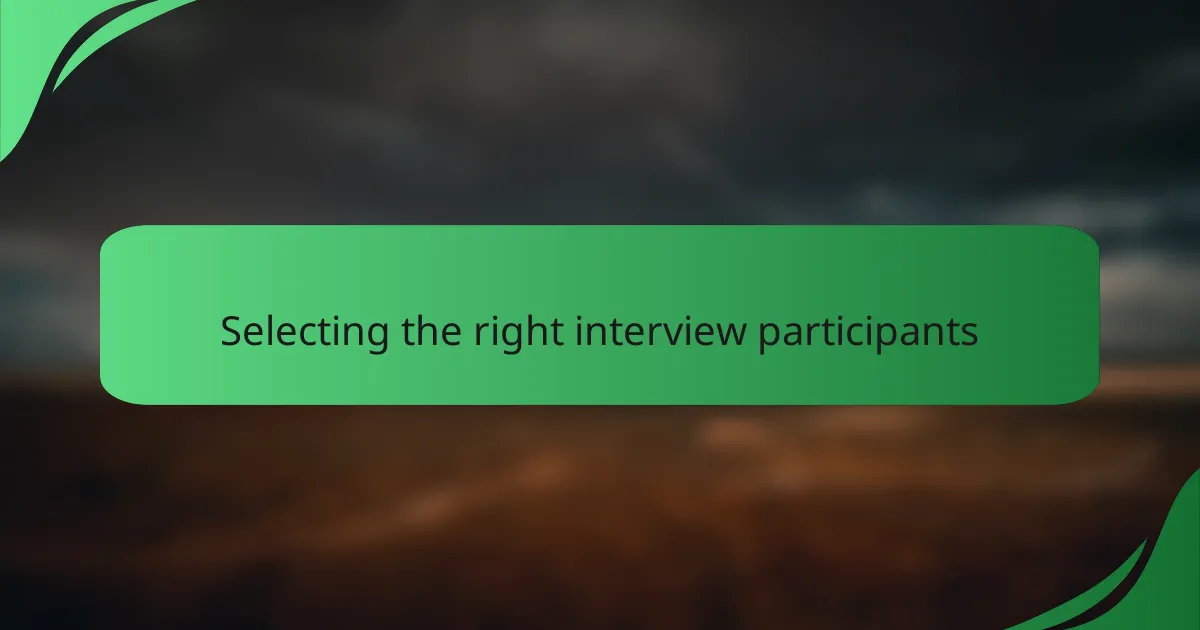
Selecting the right interview participants
Selecting the right interview participants is crucial to the success of your user research. I always make a point to look for users who closely match the target demographic for the interface I’m designing. For instance, while working on a project for a financial app, I intentionally chose participants with varying levels of financial literacy. This diversity in experience allowed me to capture insights from both novice and expert users, and I found that contrasting perspectives often led to the richest discussions.
Another strategy I employ is to consider the users’ frequency of interaction with the interface. Engaging regular users typically yields deeper insights than occasional users. In one project, I interviewed a user who used the interface daily. Their in-depth familiarity brought to light subtle usability issues that a casual user might overlook. I often ask myself, “Are these participants truly representative of my user base?” and this reflective questioning guides my selection process.
Additionally, incorporating feedback from other team members can be a game-changer. While scoping for interview participants, I consult with colleagues to identify users who might provide unique perspectives, like someone from a different age group or background. Collaborating on participant selection not only broadens my view but ensures I’m considering insights I might not have arrived at alone. It’s a reminder that diverse voices are key to truly understanding user experiences.
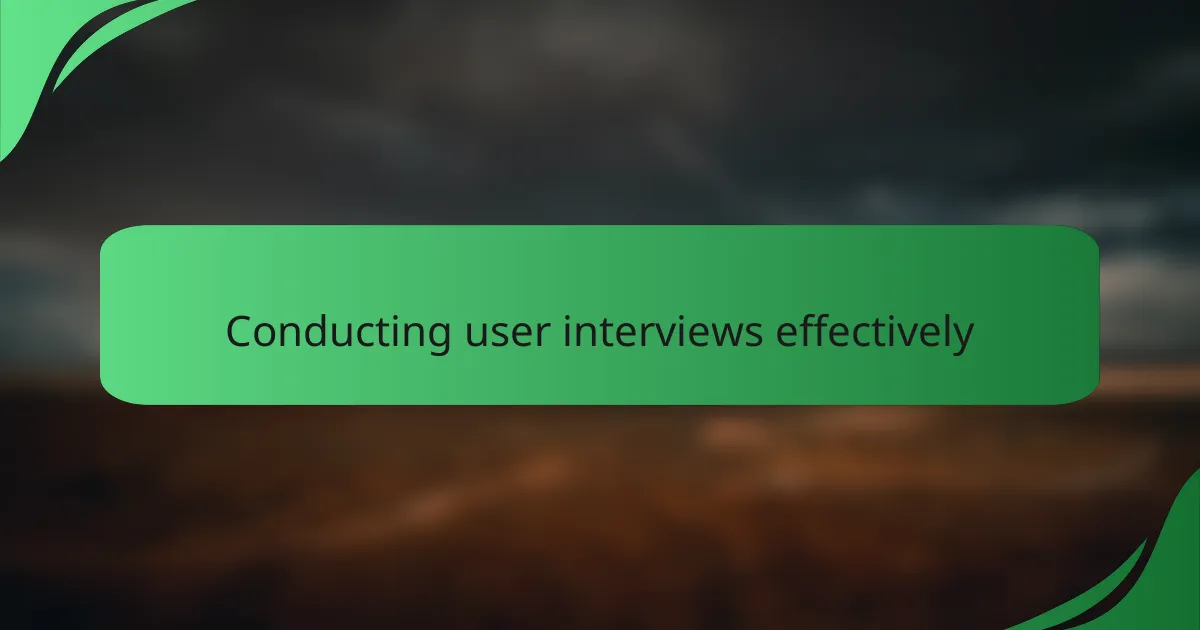
Conducting user interviews effectively
When it comes to conducting user interviews effectively, I’ve discovered the art of creating a relaxed atmosphere. Building rapport is essential; I often start conversations with light, friendly topics that allow participants to feel at ease. For example, I once shared a funny experience about using a complicated app, which led the user to open up about their challenges. This light-hearted connection often reveals more genuine feedback.
Listening is another cornerstone of effective interviewing. I recall a takeaway from one session where a user mentioned feeling overwhelmed by too many features, yet they didn’t explicitly connect it to usability issues right away. By actively listening and probing further, I could help them articulate their thoughts more clearly. It’s about creating a conversation where the participant feels heard and understood, almost like a dialogue between friends.
Lastly, recording interviews has transformed how I analyze them. I always ask for permission first, and then I listen back with a fresh perspective. It’s remarkable how many layers I uncover during a replay; I often catch things I missed in the moment. It’s those subtle nuances—an unexpected pause, a change in tone—that can lead to powerful revelations about user experiences and expectations. Wouldn’t you agree that those little moments often hold the biggest insights?
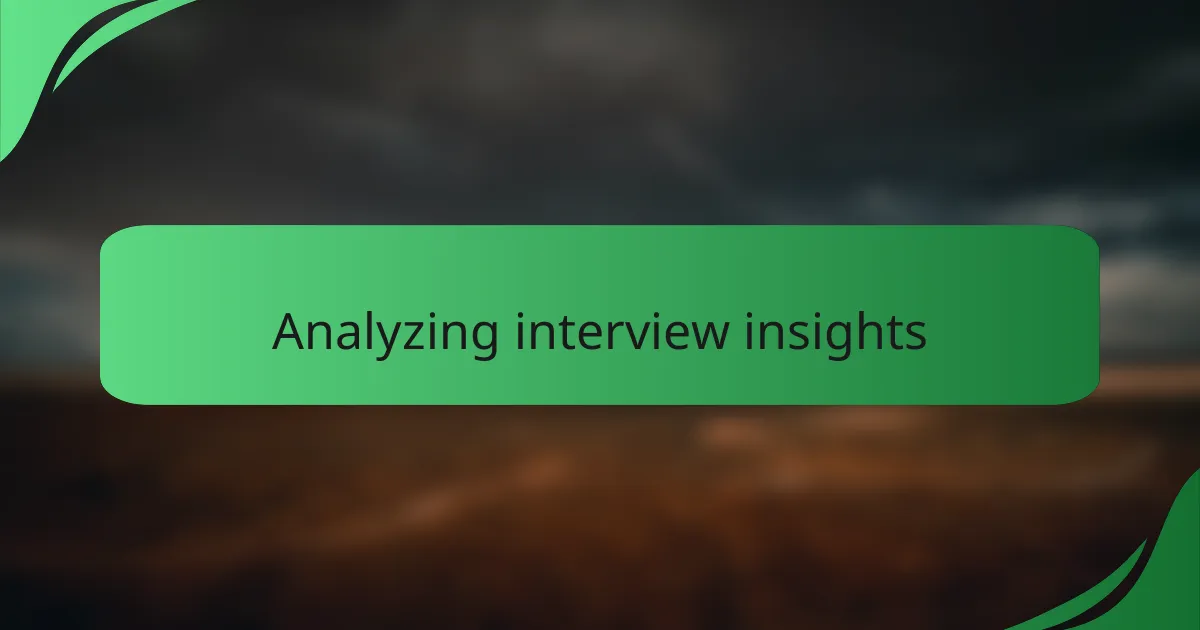
Analyzing interview insights
When it comes to analyzing insights from user interviews, I find it essential to look beyond the surface. For instance, I once interviewed a user who was frustrated with a particular feature. Initially, I took their feedback at face value, but upon deeper probing, I understood their real need was for more intuitive navigation. This taught me the importance of not just hearing what’s said but also reading between the lines.
In my experience, organizing feedback into themes can clarify the conversation’s focus. By grouping comments by recurring pain points or suggestions, it becomes easier to prioritize which issues to tackle first. A simple table can help visualize differences in user sentiment, revealing patterns that may not be immediately obvious.
| User Sentiment | Frequency |
|---|---|
| Frustration with navigation | 10 |
| Desire for more customization | 7 |
| Appreciation for design aesthetics | 5 |
